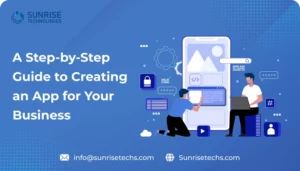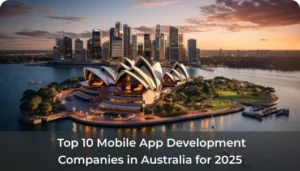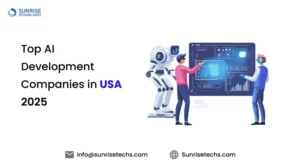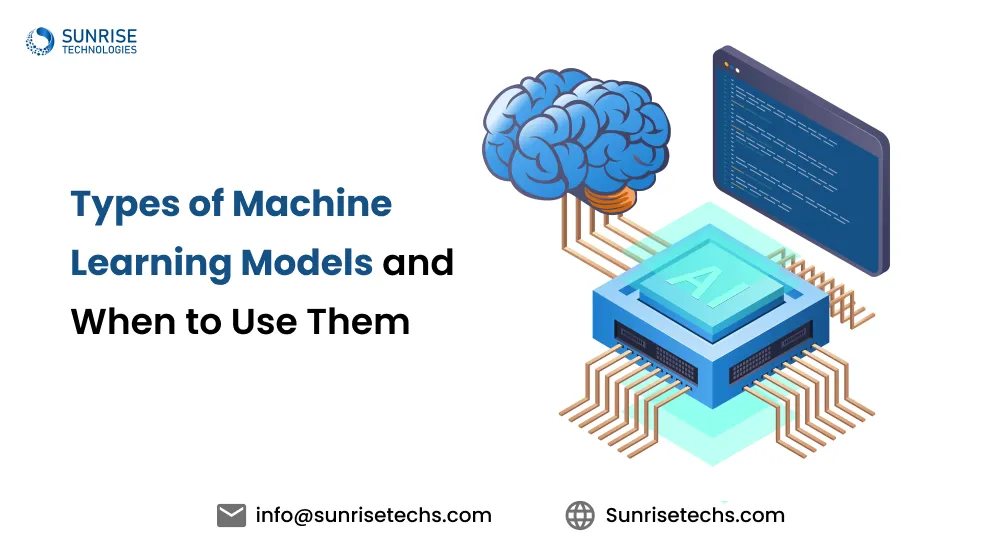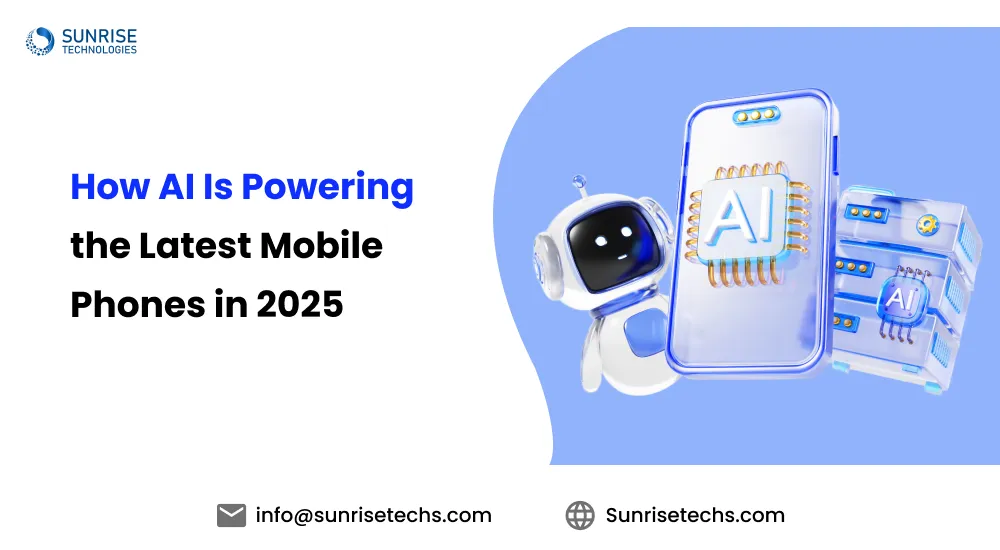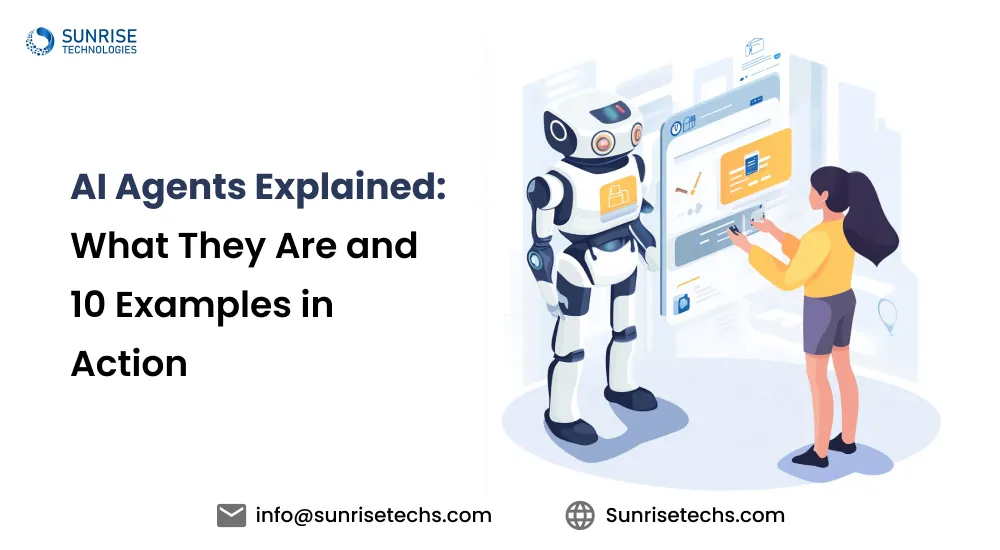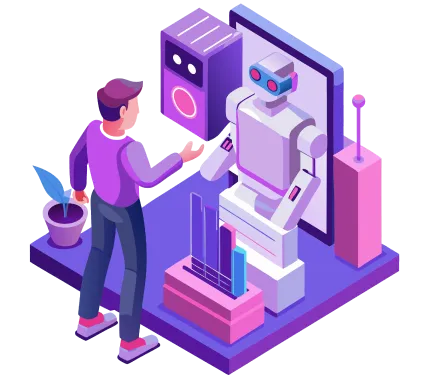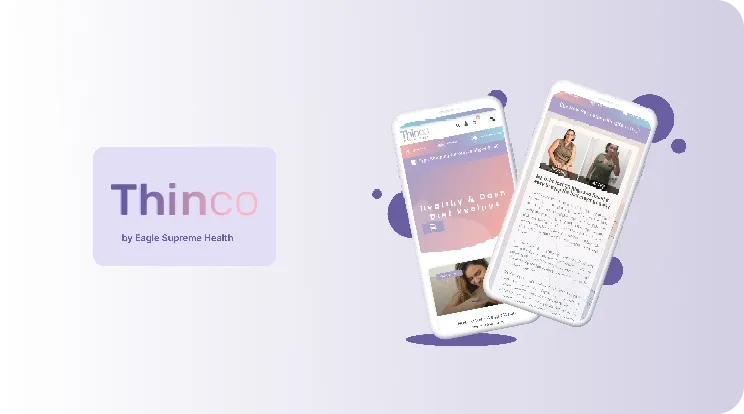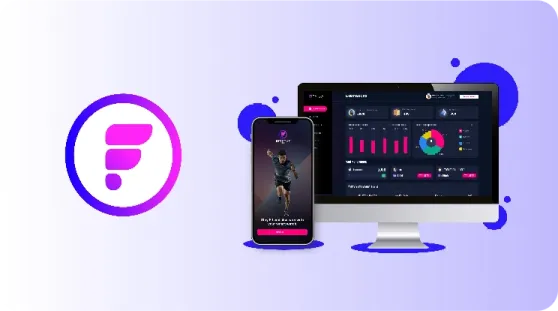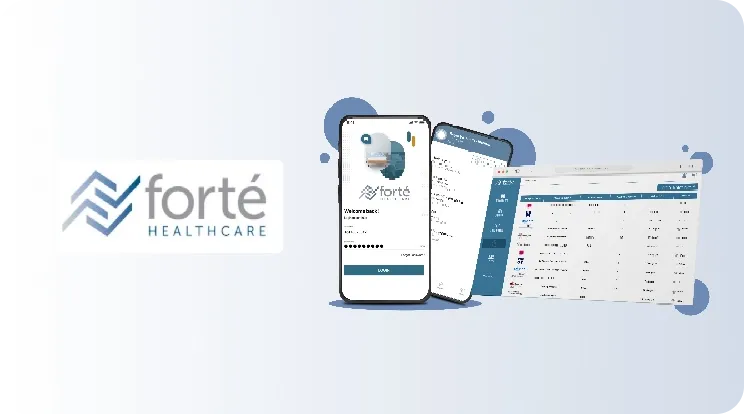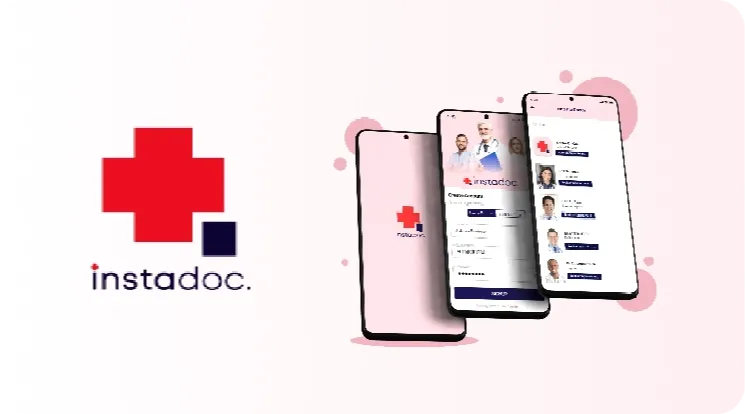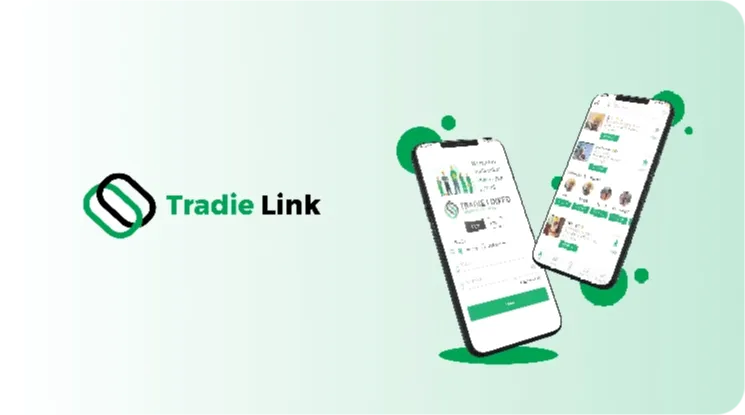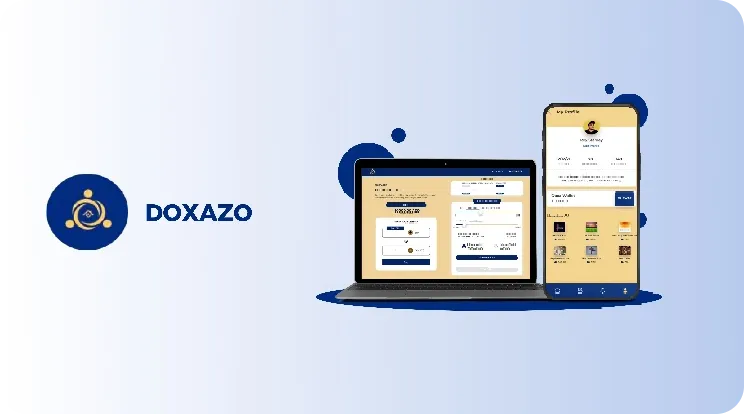How to navigate challenges in business with generative AI
May 21, 2025
Generative AI is rapidly transforming industries worldwide, extending its reach across various sectors. Businesses are increasingly adopting GenAI to automate content creation, enhance customer experiences, and optimize internal operations. This unprecedented growth is fueled by advancements in machine learning architectures, the accessibility of pre-trained foundation models, and an expanding ecosystem of plug-and-play AI platforms.
According to GlobeNewWire, the global generative AI market was valued at USD 25.86 billion in 2024 and is projected to soar to USD 803.90 billion by 2033. In North America alone, the generative AI market surpassed USD 10.60 billion in 2024, with an expected growth rate of 10.60% CAGR during the forecast period.
While the adoption of generative AI development is booming, several common challenges arise in its implementation. In this blog, we will explore how businesses can overcome these hurdles, discuss the applications of generative AI across industries, and offer insights on leveraging this transformative technology for success. Let’s dive into the details!
What Is Generative AI, and What Does Generative AI Do?
Generative AI (GenAI) is a transformative subset of artificial intelligence that leverages advanced algorithms to produce new, realistic content, often indistinguishable from human-created data. It operates using cutting-edge technologies like large language models (LLMs), such as OpenAI’s GPT series, and generative adversarial networks (GANs). Generative AI is typically used for:

- Email and Marketing Copy Generation AI automates the creation of personalized, engaging email campaigns, ads, and social media posts, driving better customer engagement and improving response rates.
- Product Descriptions For e-commerce businesses, AI generates SEO-optimized, consistent product descriptions that highlight key features and benefits, saving time for content teams.
- Customer Service Interactions AI-powered chatbots handle routine customer queries, troubleshooting, and order tracking, enhancing response times and freeing up human agents for more complex issues.
- Knowledge Base Articles Generative AI helps create and update knowledge base articles, FAQs, and how-to guides, keeping content relevant and accurate for both customers and employees.
- Internal Reports and Insights AI analyzes large datasets to automatically generate insightful reports, identify trends, and suggest actionable strategies, helping businesses make informed decisions quickly.
- HR Documentation From writing job descriptions to drafting internal policies and onboarding guides, HR teams can rely on Generative AI to produce compliant and professional documents.
At the core of Generative AI is its ability to generate diverse types of content. It works by analyzing input data (text, images, audio, etc.) and using this information to craft new, realistic versions of that content. For instance, in the case of text, LLMs are trained on massive datasets and, after learning the intricacies of language patterns, can generate human-like responses. In the case of images or videos, GANs utilize two neural networks, one generates content, and the other evaluates its realism, working together to produce highly convincing outputs.
Learn more on “How business are using Generative AI?”
What Type of Content Can Generative AI Provide for Businesses?

Generative AI isn’t limited to just words on a page, it’s a versatile powerhouse capable of producing a wide range of content formats that cater to diverse business needs. Generative AI development for enterprises helps to create smarter, faster, and more scalable digital assets across departments, and here’s a look at the key content types it can generate:
Generative AI excels at producing natural language content tailored for various business functions, including AI content generator for startups.
- Marketing copy: blogs, ads, landing pages, social media content
- Customer service responses: emails, chatbot scripts, FAQs
- HR documents: job descriptions, onboarding guides, internal memos
- Knowledge content: manuals, SOPs, whitepapers
- Legal drafts: NDAs, contracts, policy templates
Using text-to-speech (TTS) models and voice synthesis technology, Generative AI can produce high-quality, natural-sounding audio for:
- Voice assistants and IVRs (Interactive Voice Response)
- Audiobooks and podcasts
- Multilingual customer support responses
- Training modules or e-learning narration
- Voice cloning and neural TTS allow AI to mimic specific tones or branded voices.
AI image generators learn from visual datasets to create stylistically consistent and brand-aligned graphics. With models like GANs and diffusion models, AI can create:
- Marketing graphics and banners
- Product mockups
- UI/UX design elements
- Custom illustrations and concept art
- Synthetic data for machine learning training
AI combines NLP, computer vision, and speech synthesis for dynamic video content generation.. Generative AI can assist or fully automate video production through:
- AI-generated video explainers and tutorials
- Talking avatars or digital presenters
- Video ads with voiceovers and subtitles
- Automatic highlight reels or social shorts from raw footage
AI can write, debug, and optimize code in multiple programming languages. Use cases include:
- Website and app prototypes
- Automation scripts
- API integrations
- Data analysis scripts and dashboards
Generative AI is also used to simulate real-world data for training and testing machine learning models:
- Images, videos, or text mimicking real scenarios
- Anonymized datasets for privacy-conscious industries like healthcare or finance
AI can transform raw datasets into meaningful visuals and documents such as:
- Automated business reports
- Dashboards with insights and trends
- Financial summaries
- Market analysis charts and graphs
Types of Generative AI Models Used in Business
Generative AI is powered by different types of models, each tailored for specific types of content and business needs, and each model has its strengths, and businesses often use them in tandem to automate content, enhance design, and generate insights. Let’s break down the key players in the AI toolkit that are reshaping how businesses operate:

Think of LLMs like GPT-4, Claude, or Meta’s LLaMA as your go-to content generators. These models are trained on massive datasets and can understand and produce human-like text. LLMs rely on deep transformer architecture, making them incredibly good at understanding context, nuance, and tone in language.
Use Cases:
- Writing blogs, emails, and ad copy
- Drafting reports, job descriptions
- Answering queries in chatbots and virtual assistants
Multimodal AI (like GPT-4 Vision and Google’s Gemini) can process and generate both text and images, sometimes even audio or video. These models combine vision and language models, allowing businesses to automate workflows that require both formats, like creating product images with matching descriptions.
Use Cases:
- Image captioning or generation
- Visual Q&A (e.g., interpreting diagrams or infographics)
- Designing UIs based on prompts
GANs are the backbone of AI-generated visuals, from deepfakes to high-resolution synthetic images. They work by having two neural networks (a generator and a discriminator) “compete” until the output looks real. Many design and gaming companies use GANs to simulate assets, saving time and boosting creativity.
Use Cases:
- Product mockups and marketing visuals
- Fashion or design prototypes
- AI-generated avatars or faces
Popularized by platforms like Stable Diffusion and Midjourney, these models gradually “build up” an image from random noise until a coherent visual forms. They’re known for their photorealistic, high-quality outputs.
Use Cases:
- Advertising visuals
- Creative concept art
- Personalized graphic content
Common Business Problems That Can Be Solved with Generative AI
Can small businesses use Generative AI effectively? Of course, businesses of all sizes grapple with inefficiencies, scalability barriers, and rising costs, but GenAI offers tailored solutions that blend innovation for enhancing the risk mitigation strategies for Generative AI in business. Below, we break down common problems solved by Generative AI in enterprises. and how this technology turns obstacles into opportunities.
Content teams often struggle to keep up with the volume of content needed, be it marketing copy, product descriptions, reports, or internal documentation.
How GenAI Solves It: Leveraging Large Language Models (LLMs) like GPT-4 or Claude, Generative AI can auto-generate high-quality content in seconds. These models understand context, audience tone, and domain-specific language, making them ideal for blogs, email campaigns, policy manuals, and more. It reduces manual effort and accelerates content cycles without sacrificing quality.
Businesses with growing customer bases often find it difficult to maintain timely and consistent customer service, especially during peak hours.
How GenAI Solves It: AI-powered virtual agents and AI chatbots developement, built on LLMs and fine-tuned for customer interaction, can handle large volumes of repetitive queries with human-like responses. They integrate with CRMs and help desks, offering real-time responses on everything from order tracking to troubleshooting while escalating complex issues to human agents when needed.
Generic messaging and ad fatigue make it hard for brands to cut through the noise and engage consumers meaningfully.
How GenAI Solves It: Using user behavior data and purchase history, GenAI can generate personalized product recommendations, email content, landing page copy, and social media captions. Multimodal models even help blend visuals and text for hyper-targeted campaigns that connect emotionally and contextually with individual customers.
Keeping technical documentation, FAQs, training manuals, and onboarding material up to date is resource-intensive and often overlooked.
How GenAI Solves It: Generative models can ingest structured data, detect outdated information, and rewrite documentation automatically. Tools powered by Autoencoders or Retrieval-Augmented Generation (RAG) architectures ensure content is not only current but also easy to understand and optimized for search.
Executives and analysts are drowning in dashboards, metrics, and reports, making real-time decision-making a challenge.
How GenAI Solves It: AI can summarize lengthy reports, visualize trends, and even provide commentary on data insights. It goes beyond BI dashboards, thanks to its ability to contextualize data, identify anomalies, and recommend next steps. LLMs paired with vector databases make this possible, acting as intelligent data copilots.
Designers and content creators often hit resource or time constraints when developing visuals, videos, or promotional content.
How GenAI Solves It: With Diffusion Models (like Midjourney or Stable Diffusion), businesses can generate stunning, brand-aligned visuals on demand. AI video tools like RunwayML automate everything from video scripting to editing, reducing turnaround time for creative assets and enabling rapid prototyping for campaigns.
Developers are often overburdened with repetitive coding tasks, bug fixing, and documentation, leading to delays in release cycles.
How GenAI Solves It: Generative AI models like Codex or CodeWhisperer can write, debug, and suggest code snippets in real-time. It’s like having a coding assistant that speeds up development, reduces errors, and enhances productivity, especially for routine tasks or legacy system maintenance.
Generative AI for automating business operations like drafting contracts, policy documents, or HR handbooks requires precision and consumes significant time from legal or HR professionals.
How GenAI Solves It: AI can auto-draft employment contracts, NDAs, and job descriptions based on templates and compliance rules. With rule-based customization and human review, these drafts become ready-to-use in a fraction of the time.
Scaling up operations, especially customer-facing ones, usually demands more people and higher costs.
How GenAI Solves It: Generative AI helps businesses scale content, communication, service, and insight generation across geographies and languages, without needing to proportionally scale their workforce. This makes global expansion and customer engagement more sustainable.
Generative AI is your creative co-pilot, empowering businesses of all sizes. Ready to build your intelligent content bot?
Industries Benefiting from Generative AI Applications in Business
“How Generative AI is used in industries” is always the first question when researching AI. Yes, Generative AI solutions address both operational challenges and customer engagement. Here’s how Generative AI is helping businesses across different sectors achieve greater efficiency, enhanced creativity, and cost savings

In the marketing sector, Generative AI for automating business operations, creates highly personalized and data-driven marketing content. AI-powered platforms can generate targeted ads, social media posts, and landing pages tailored to individual customer preferences and behaviors. By leveraging large datasets, Generative AI delivers personalized experiences at scale, increasing customer engagement and conversion rates.
Generative AI in healthcare is helping to streamline documentation and improve patient care. By analyzing patient data, Generative AI can automatically generate clinical notes and assist healthcare professionals with symptom checks. This reduces the administrative burden, allowing healthcare workers to focus on direct patient care. AI also helps in generating personalized treatment plans and automating patient follow-up processes, significantly improving efficiency.
Furthermore, Generative AI plays a critical role in drug discovery by analyzing massive datasets to predict molecular behavior and potential outcomes, speeding up research and development.
Generative AI in Finance industry automates the generation of financial reports, balance sheets, and even investment insights. By utilizing AI to analyze financial data, companies can quickly generate accurate reports and forecasts, freeing up analysts to focus on higher-value tasks.
Additionally, Generative AI in fraud detection, helps financial institutions detect suspicious activity by continuously analyzing transaction patterns and learning from anomalies. This proactive approach not only reduces financial risks but also increases trust in financial platforms.
Generative AI in Retail has revolutionized how businesses interact with consumers. AI-powered virtual try-on tools allow customers to visualize how products, like clothing or makeup, will look on them without leaving their homes. This boosts online sales by enhancing the online shopping experience.
Additionally, Generative AI generates personalized recommendations based on customer behavior and past purchases. Retailers can now suggest relevant products to customers, improving cross-selling and up-selling opportunities, and enhancing overall customer satisfaction.
In the legal sector, Generative AI is assisting law firms in drafting contracts and analyzing legal precedents. AI can create contract templates and even suggest legal language based on specific requirements. This dramatically reduces the time spent on drafting and reviewing legal documents.
By using Generative AI, law firms can ensure that their documents are not only legally sound but also in compliance with evolving regulations, allowing legal professionals to dedicate more time to strategy and client relations.
Generative AI in hiring, automates the process of screening resumes and generating job descriptions. AI tools analyze candidate resumes to match them with job requirements, making the recruitment process faster and more efficient.
Moreover, Generative AI can create customized job descriptions that attract the right talent by automatically analyzing market trends and job-seeker profiles, ensuring the right fit for the company culture and role requirements.
Benefits of Generative AI for Businesses
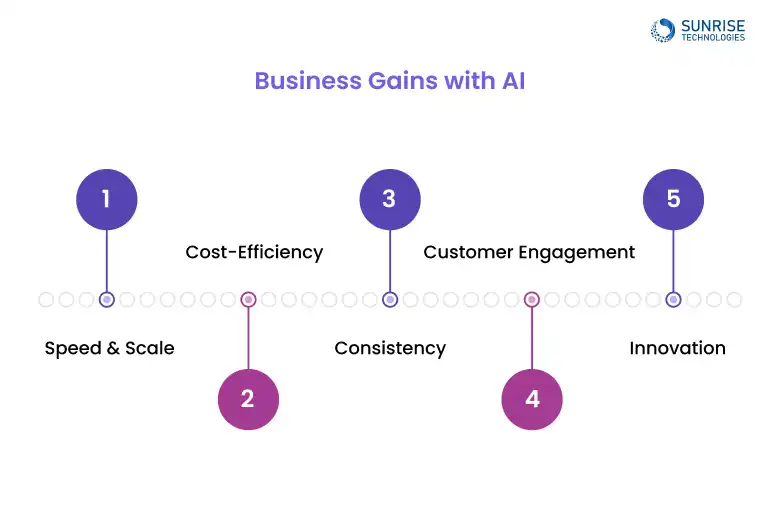
Generate thousands of documents, emails, or product descriptions in seconds. This AI-powered scalability is unmatched by manual workflows.
By reducing operational overhead, Generative AI helps teams focus on strategic work while AI handles repetitive content generation and data summarization.
Maintain a consistent tone, language, and compliance adherence across all platforms, ideal for regulated industries like finance, healthcare, and legal.
With AI chatbots and personalized messaging, companies can scale customer service and marketing outreach without losing the human touch.
Generative AI allows rapid experimentation with new campaigns, product ideas, and even synthetic data models, bringing faster time-to-market and continuous innovation.
Cost of Implementing Generative AI in Business
So, what is the cost of Generative AI in business? When considering Generative AI implementation in business, one of the most important factors is cost. The cost of implementing Generative AI can vary significantly depending on several factors, such as the size of the data, the level of customization, and whether you’re using pre-trained models or building custom models.
Typically, for a minimum viable product (MVP), businesses can expect to spend anywhere from $20,000 to $50,000( MVP can start from $ 10,000) for small to mid-sized projects. However, for more robust, enterprise-grade Generative AI applications, costs can scale up to $250,000+ or more, depending on the complexity, features, and customization involved.
Companies should balance their investment in terms of expected benefits, such as increased operational efficiency, automation, and enhanced customer engagement, against these upfront and ongoing costs.
- Size of Data
- Level of Customization
- Pre-Trained vs Custom Models:
- Ongoing Infrastructure and Monitoring
Got questions about cost estimation?
Real-World Examples of Businesses Leveraging Generative AI
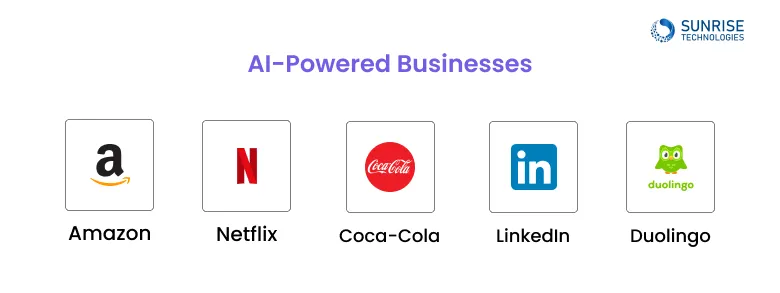
Amazon has adopted Generative AI for automated product description generation in e-commerce. By leveraging large language models, Amazon helps sellers auto-generate compelling and SEO-optimized product listings using minimal input, just a few keywords or bullet points.
This AI-driven process enhances listing quality, increases discoverability, and reduces the time spent writing descriptions manually. For a marketplace handling millions of products, scalable content generation has become a game-changer. The model even adapts tone and format based on category-specific norms, improving both customer experience and conversion rates.
Netflix is exploring Generative AI for multimedia content localization and dubbing, using AI to automate script translations, voice cloning, and lip-sync matching. With a global audience, maintaining authenticity across languages is crucial.
By combining text-to-speech models, deep learning, and audio synthesis, Netflix streamlines post-production and reduces turnaround time without sacrificing quality. This technology not only lowers dubbing costs but also ensures faster international releases of original content.
Coca-Cola made a bold move into the world of Generative AI in marketing campaigns with its “Create Real Magic” initiative. Powered by OpenAI’s DALL·E and GPT, the brand invited users to create AI-generated artwork and ad copy using Coca-Cola’s iconic branding elements.
By combining text-to-image generation (via DALL·E) with natural language understanding (via GPT), Coca-Cola created a personalized and interactive brand experience that resonated globally. The campaign demonstrated how generative design tools can drive consumer engagement and creative scalability at an unprecedented pace, setting a new standard for AI-led brand innovation.
LinkedIn has quietly integrated Generative AI for content generation on professional platforms, enabling users to draft posts, summaries, and job descriptions more efficiently. Using large language models (LLMs) like GPT-4, the platform helps users articulate ideas with clarity and relevance, whether they’re writing updates, job postings, or outreach messages.
This automation doesn’t just save time, it also ensures consistent tone and structure, enhancing communication across millions of professionals. Behind the scenes, these AI tools are trained on contextual data and user intent, creating dynamic suggestions tailored to user activity and profile content.
Duolingo is leading the way with Generative AI for personalized learning in edtech, using OpenAI-powered models to simulate human-like conversations and adaptive learning paths. With tools like AI-generated dialogues and grammar explanations, the app creates a more immersive and tailored learning experience for each user.
The generative system learns from user interactions, identifies weak spots, and dynamically adjusts lesson plans, making education not only interactive but also hyper-personalized. This showcases how transformer-based AI can be leveraged to enhance learning engagement and outcomes at scale.
Partner with Sunrise Technologies - Your AI development company in Australia and the USA
Navigating the complexities of implementing Generative AI can feel overwhelming, but it doesn’t have to be. At Sunrise Technologies, we specialize in helping businesses with custom AI development to harness the power of Generative AI in a way that’s secure, ethical, and ROI-driven.
- 1. Identify the right GenAI use case aligned with your business goals, whether it's automating content creation or streamlining internal processes.
- 2. Choose scalable and ethical GenAI tools that integrate seamlessly with your existing tech stack.
- 3. Build secure and compliant AI solutions with strong data governance, privacy controls, and auditability.
- 4. Accelerate innovation with measurable AI ROI through tailored KPIs and outcome-focused development.
Wrapping Up:
From transforming content creation to automating customer interactions and streamlining backend operations, Generative AI development for business is a strategic necessity. With models like GPT-4, Diffusion Networks, and multimodal AI accelerating productivity and personalization, enterprises are leveraging AI to drive innovation, reduce manual workloads, and scale faster than ever. However, extracting real business value from GenAI requires technical precision, thoughtful integration, and alignment with industry-specific needs.
That’s where Sunrise Technologies, a top Generative AI development company, comes in. We specialize in custom Generative AI development for enterprises that’s tailored to your business goals, whether it’s building domain-specific LLMs, deploying secure enterprise-grade AI tools, or integrating GenAI with your existing infrastructure. As a trusted Generative AI development services in USA and Australia, Sunrise Technologies helps you navigate complexity with scalable architectures, ethical frameworks, and measurable ROI. Let’s co-create the future of your business with smarter, faster, and GenAI-powered.
Embrace the power of Generative AI and stay miles ahead. Creativity, now on autopilot.
Generative AI can automate marketing content, draft legal contracts, assist customer service, create training materials, and more—boosting efficiency across departments.
Key challenges include data privacy concerns, lack of governance, integration difficulties, and potential content inaccuracies.
AI solves problems by automating repetitive tasks, analyzing large datasets for insights, and providing predictive recommendations for faster decisions.
Implementing Generative AI in business comes with several potential risks, including:
- Data Privacy and Security Risks
- Bias and Inaccuracy in AI Outputs
- Lack of Transparency in AI Models
- Ethical Implications of AI-generated Content
- Regulatory Compliance Challenges
- Job Displacement Concerns
To mitigate these risks, implement strong data governance, ensure AI systems are transparent and ethical, and stay updated on regulations and best practices.
Tools like ChatGPT, Jasper, Notion AI, and Google’s Bard offer cost-effective ways for SMBs to implement Generative AI without needing deep technical expertise.
Sam is a chartered professional engineer with over 15 years of extensive experience in the software technology space. Over the years, Sam has held the position of Chief Technology Consultant for tech companies both in Australia and abroad before establishing his own software consulting firm in Sydney, Australia. In his current role, he manages a large team of developers and engineers across Australia and internationally, dedicated to delivering the best in software technology.
